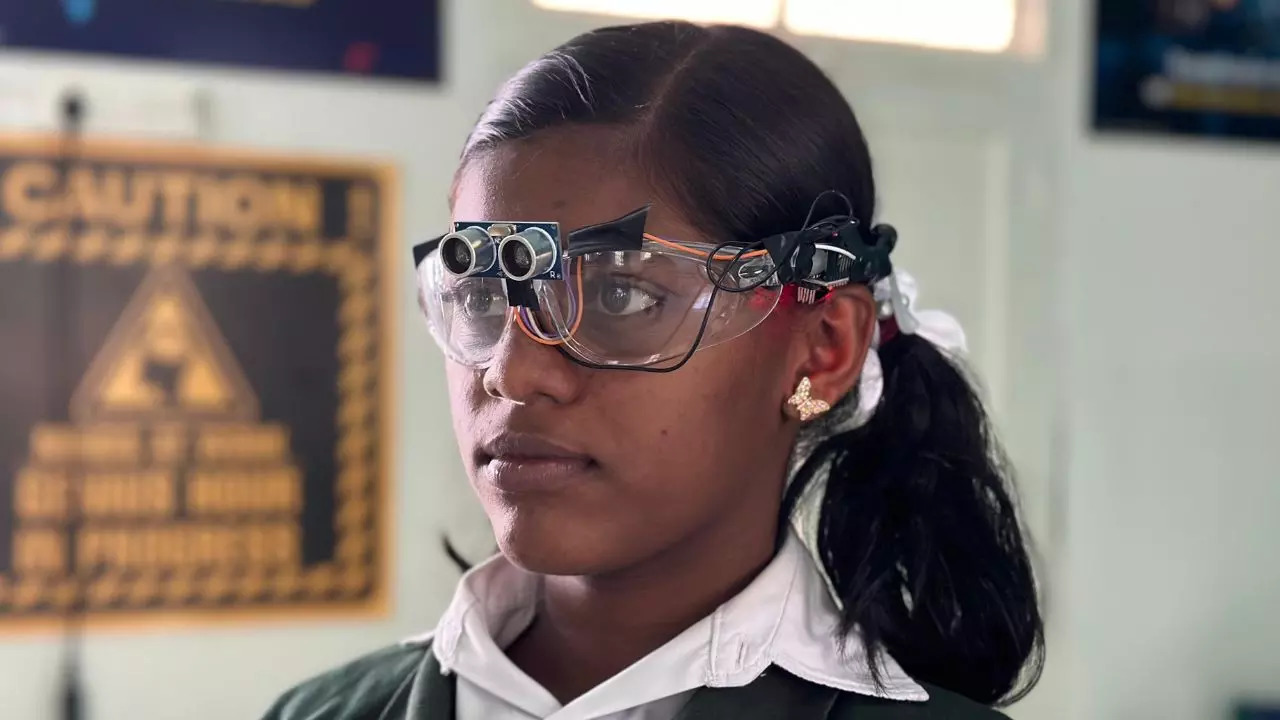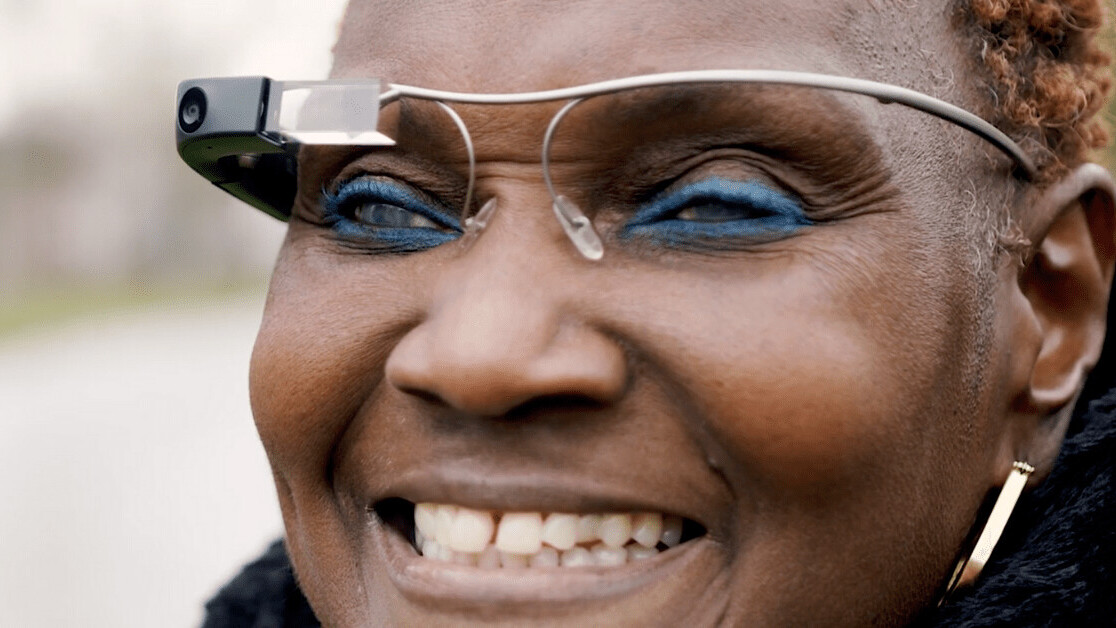Mobility Aids for Visually Impaired Users: Enhancing Independence and Navigation
Mobility Aids for Visually Impaired Users: Enhancing Independence and Navigation
Blog Article
Discover Advanced Assistive Devices for People With Visual Problems
The landscape of assistive modern technology for individuals with visual problems is progressing rapidly, offering a range of cutting-edge tools that improve freedom and involvement. From clever glasses that flawlessly merge aesthetic input with auditory assistance to sophisticated navigation applications that redefine spatial recognition, these devices are improving opportunities.
Smart Glasses Innovations
Smart glasses represent a significant development in assistive innovation for people with aesthetic problems. These ingenious devices incorporate different features created to boost the user's communication with their setting. Furnished with sensing units and video cameras, smart glasses can catch real-time aesthetic info, which is then processed and conveyed to the customer through sound feedback or haptic sensations. This performance allows individuals to obtain instant summaries of their surroundings, enhancing their capacity to involve and browse with the globe.
Moreover, developments in artificial intelligence have better improved the capacities of clever glasses. Equipment discovering formulas can recognize faces, checked out message, and identify things, making them vital devices for daily tasks. Users can receive auditory cues that provide context about their setting, promoting freedom and self-confidence.
In addition, the ergonomic design and lightweight nature of numerous clever glasses make them appropriate for prolonged usage, guaranteeing convenience while boosting functionality. As these gadgets proceed to advance, they hold the possible to reinvent the means individuals with visual problems experience their every day lives, bridging the space between access and innovation. The recurring r & d in this field promise to expand the opportunities for smart glasses, making them an important element of modern assistive tools.
Navigating Apps and Devices
Countless navigation applications and devices have become necessary sources for individuals with visual disabilities, substantially boosting their capacity to go across unfamiliar settings. These technologies take advantage of GPS functionality, audio cues, and real-time data to supply individuals with accurate navigating help.
One noticeable instance is the Aira app, which links individuals to trained agents who can supply aesthetic descriptions of surroundings and navigating assistance with a live video feed. This service improves the user's spatial recognition and self-confidence while navigating. Another significant device is Seeing Eye GPS, which offers voice-guided navigating and factors of rate of interest, making it possible for customers to accessibility vital information regarding their surroundings.

As technology proceeds to advance, the development of much more innovative navigating devices promises to more encourage people with visual impairments, helping with seamless flexibility and integration right into varied environments. Such developments are important in promoting an extra comprehensive culture.
Braille Innovation Improvements
Over the last few years, advancements in Braille technology have substantially changed exactly how people with visual impairments gain access to info and engage with the world around them. The development of mobile Braille display screens has changed reading by allowing users to link wirelessly to tablet computers, mobile phones, and computer systems. These tools convert message right into Braille in real-time, making it possible for smooth communication with electronic material.
Additionally, cutting-edge Braille printers have actually arised, boosting the manufacturing of responsive products. Modern embossers are much faster and more reliable, enabling the rapid production of Braille papers and educational products. This performance lowers the moment and price linked with creating Braille sources, making them more obtainable to colleges and companies.
Furthermore, the assimilation of Braille with various other modern technologies, such as expert system and artificial intelligence, has actually opened brand-new opportunities for personalized knowing experiences. Voice recognition and synthesis modern technologies can enhance Braille, offering an inclusive strategy to information dissemination.
As the demand for inclusive education and office atmospheres grows, these technological advancements play an essential role in encouraging people with visual problems, guaranteeing they have equal access to information and opportunities in numerous aspects of life.
Wearable Instruments for Independence
An expanding array of wearable devices is improving self-reliance for individuals with visual problems, offering cutting-edge services that improve navigation and everyday living. Braille displays and notetakers. These devices utilize innovative technologies to supply real-time comments and assistance, promoting freedom in numerous settings

Wearable modern technology likewise consists of smartwatches that can be programmed with accessibility features, making it possible for customers to get alerts, track their places, or perhaps ask for help with the touch of a button. Moreover, some devices integrate expert system to evaluate the environment, offering audio summaries of neighboring items or people.
Voice-Activated Assistive Solutions
Leveraging voice-activated assistive remedies has actually transformed the landscape of assistance for people with aesthetic impairments, offering hands-free interaction and access to a selection of tasks. These innovations make use of natural language handling and expert system to enable users to do daily tasks with simple voice commands.

Additionally, current developments in voice acknowledgment precision have actually improved the user experience substantially, suiting varied accents and speech patterns. This inclusivity ensures that more people can take advantage of these modern technologies, fostering a higher feeling of autonomy.
Conclusion
Finally, the development of innovative assistive devices dramatically improves the freedom and lifestyle for people with visual impairments. Technologies such as wise glasses, navigation applications, Braille technology, wearable tools, and voice-activated solutions collectively foster an even more comprehensive visit their website atmosphere. These innovations empower users to browse their surroundings with confidence and involve more completely with the world, ultimately advertising higher access and equivalent opportunities for people facing visual obstacles.
The landscape of assistive technology for people with visual problems is evolving swiftly, offering a range of innovative tools that improve freedom and involvement.Smart glasses represent a considerable development in assistive innovation for individuals with aesthetic problems. As these devices proceed to progress, they hold the possible to transform the way individuals with aesthetic disabilities experience their daily lives, connecting the gap in between accessibility and modern technology.In recent years, developments in Braille innovation have significantly changed how people with visual problems accessibility details and engage with the globe around them. These modern technologies encourage customers to navigate their environments with confidence and involve even more fully with the globe, ultimately advertising higher availability and equivalent chances for individuals encountering visual obstacles.
Report this page